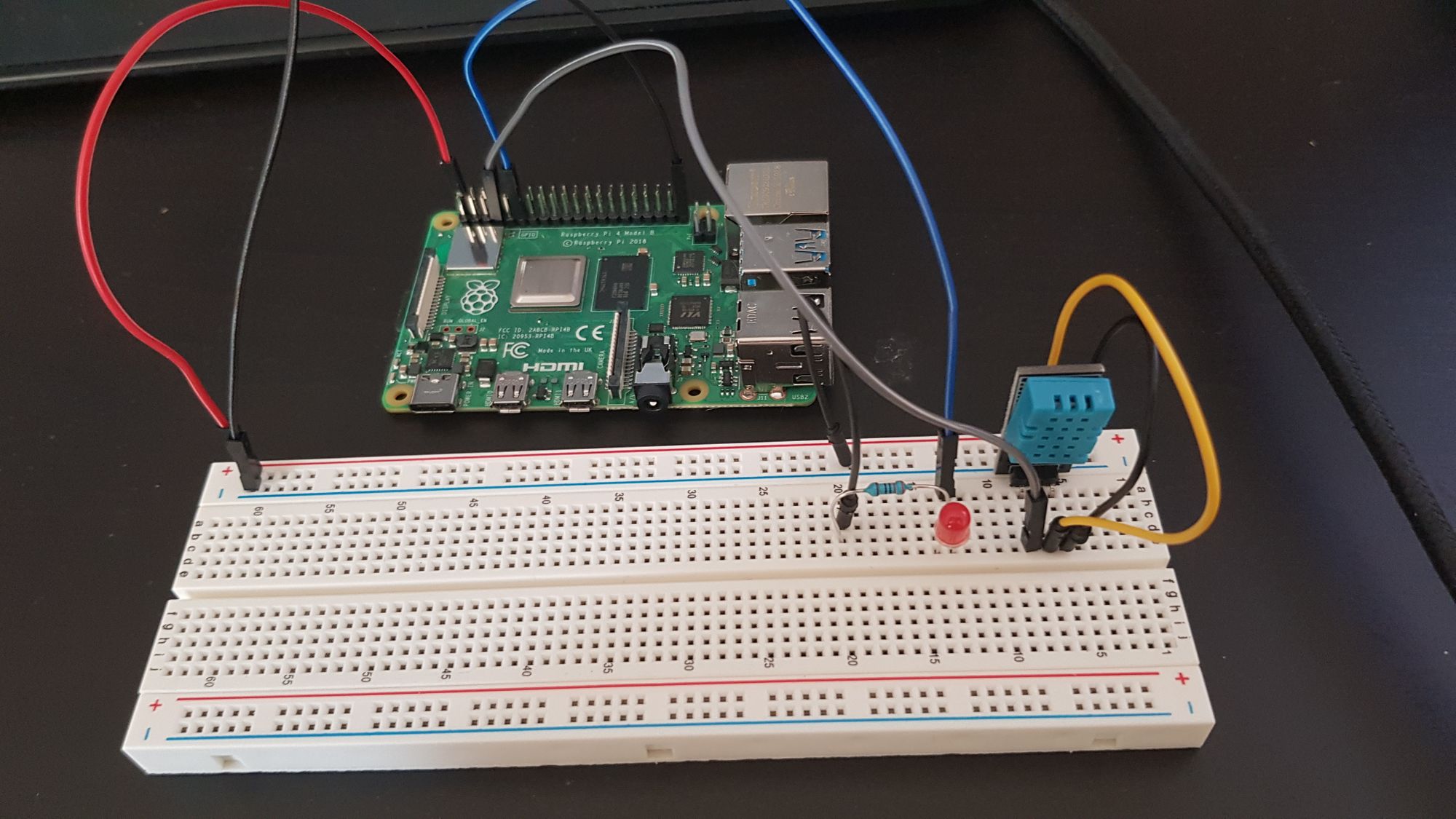Imagine being able to control your IoT devices from anywhere in the world with just a few simple commands. Sounds like magic, right? Well, it's not – it's the power of SSH on Raspberry Pi! Whether you're a hobbyist, developer, or tech enthusiast, setting up secure shell (SSH) on your Raspberry Pi can revolutionize how you interact with your Internet of Things (IoT) devices. But which SSH method is the best for Raspberry Pi? Let's dive into the details and find out!
In today's interconnected world, IoT devices are everywhere. From smart homes to industrial automation, these gadgets are changing the way we live and work. At the heart of many IoT projects lies the humble Raspberry Pi – a tiny yet powerful computer that can be transformed into a powerhouse of remote control and automation. But to unlock its full potential, you need the right tools – and SSH is one of the best.
SSH, or Secure Shell, allows you to remotely access and manage your Raspberry Pi from another computer. It's like having a virtual set of hands that can operate your device no matter where you are. But with so many SSH clients and methods available, choosing the best one for your IoT projects can feel overwhelming. Don't worry – we've got you covered!
What is SSH and Why Does It Matter for Raspberry Pi?
SSH stands for Secure Shell, and it's basically a way to securely connect to your Raspberry Pi from another computer. Think of it as a digital tunnel that lets you send commands and transfer files without anyone else peeking in. For IoT enthusiasts, this is a game-changer. You can monitor sensors, control actuators, and even update software without needing to physically touch your Raspberry Pi.
Here's why SSH is so important:
- It's secure – all your data is encrypted, so hackers can't intercept it.
- It's reliable – SSH connections are stable and can handle complex operations.
- It's versatile – you can do almost anything with SSH, from running scripts to transferring large files.
For Raspberry Pi users, SSH is a must-have tool. Whether you're setting up a home automation system or building a weather station, having remote access to your device makes life so much easier.
- Hailey Welchs Net Worth 2024 From Viral To Value
- Unlock Your Potential Earl Nightingales Wisdom For A Better Life
Why Raspberry Pi is Perfect for IoT Projects
Raspberry Pi is not just a tiny computer – it's a powerhouse for IoT projects. With its low cost, compact size, and vast community support, it's no wonder why so many people choose Raspberry Pi for their IoT needs. Here are some reasons why Raspberry Pi is perfect for IoT:
- It's affordable – you can get started with Raspberry Pi for under $50.
- It's versatile – Raspberry Pi supports a wide range of sensors, actuators, and peripherals.
- It's easy to use – with pre-built images and tons of tutorials, even beginners can get up and running quickly.
And let's not forget about SSH! With Raspberry Pi, setting up SSH is a breeze, making it even easier to manage your IoT devices remotely. So whether you're controlling a smart lock or monitoring a greenhouse, Raspberry Pi has got you covered.
Top SSH Clients for Raspberry Pi
Now that we know why SSH is so important, let's talk about the best SSH clients for Raspberry Pi. There are tons of options out there, but some stand out from the crowd. Here are our top picks:
1. PuTTY
PuTTY is one of the most popular SSH clients out there, and for good reason. It's free, open-source, and works on Windows, macOS, and Linux. PuTTY is perfect for beginners because it's easy to use and has a simple interface. Plus, it supports a wide range of protocols, including SSH, Telnet, and Serial.
2. OpenSSH
OpenSSH is the go-to choice for Linux users. It's pre-installed on most Linux distributions, including Raspberry Pi OS, so you don't need to download anything. OpenSSH is powerful, secure, and highly customizable, making it a favorite among advanced users.
3. MobaXterm
MobaXterm is a powerful SSH client that offers more than just remote access. It includes features like file transfer, network tools, and a built-in X server, making it perfect for complex IoT projects. If you're looking for a Swiss Army knife of SSH clients, MobaXterm is the way to go.
These are just a few of the many SSH clients available for Raspberry Pi. Each has its own strengths and weaknesses, so the best one for you depends on your specific needs and preferences.
How to Set Up SSH on Raspberry Pi
Setting up SSH on Raspberry Pi is surprisingly easy. Here's a step-by-step guide to get you started:
- Enable SSH on your Raspberry Pi by running the command
sudo raspi-configand selecting "Interfacing Options"> "SSH"> "Enable". - Find your Raspberry Pi's IP address by running
hostname -Iin the terminal. - Download and install your preferred SSH client on your computer.
- Connect to your Raspberry Pi by entering its IP address in the SSH client.
That's it! You're now ready to start exploring the world of remote access and IoT automation.
Best Practices for Using SSH with Raspberry Pi
While SSH is a powerful tool, it's important to use it safely and effectively. Here are some best practices to keep in mind:
- Use strong passwords – avoid using common words or phrases that can be easily guessed.
- Enable two-factor authentication – this adds an extra layer of security to your SSH connections.
- Regularly update your Raspberry Pi – keep your software up to date to protect against vulnerabilities.
- Limit access – only allow trusted IP addresses to connect to your Raspberry Pi via SSH.
By following these best practices, you can ensure that your SSH connections are as secure as possible.
SSH Alternatives for Raspberry Pi
While SSH is the most popular method for remote access, it's not the only option. Here are some alternatives you might want to consider:
1. VNC (Virtual Network Computing)
VNC allows you to remotely control your Raspberry Pi's graphical interface. It's perfect for tasks that require a GUI, but it can be slower than SSH.
2. Web-Based Interfaces
Some IoT projects come with web-based interfaces that allow you to manage your devices through a browser. This is great for beginners who aren't comfortable with the command line.
3. MQTT
MQTT is a lightweight messaging protocol that's perfect for IoT devices. While it's not a direct replacement for SSH, it can be used to send commands and receive data from your Raspberry Pi.
Each of these alternatives has its own advantages and disadvantages, so it's worth exploring them to see which one suits your needs best.
Real-World Examples of SSH in IoT Projects
Let's take a look at some real-world examples of how SSH is being used in IoT projects:
1. Smart Home Automation
Many smart home systems use SSH to allow users to remotely control their devices. Whether it's turning on the lights or adjusting the thermostat, SSH makes it easy to interact with your smart home from anywhere.
2. Environmental Monitoring
Scientists and researchers often use Raspberry Pi and SSH to monitor environmental conditions like temperature, humidity, and air quality. By setting up SSH, they can collect data and make adjustments without needing to be on-site.
3. Industrial Automation
In industrial settings, SSH is used to manage and monitor machines and processes. From controlling robots to analyzing production data, SSH plays a crucial role in modern manufacturing.
These examples show just how versatile SSH can be in the world of IoT.
Troubleshooting Common SSH Issues
Even the best tools can have problems sometimes. Here are some common SSH issues and how to fix them:
- Connection Refused: Make sure SSH is enabled on your Raspberry Pi and that your IP address is correct.
- Authentication Failed: Double-check your username and password, and ensure that your SSH keys are properly configured.
- Timeout Errors: Check your network connection and make sure there are no firewalls blocking your SSH traffic.
By troubleshooting these common issues, you can ensure that your SSH connections are always smooth and reliable.
Conclusion: Take Your IoT Projects to the Next Level with SSH
SSH is an incredible tool for anyone working with IoT devices on Raspberry Pi. Whether you're a beginner just starting out or an experienced developer looking to streamline your workflow, SSH can help you achieve your goals. By following the tips and best practices outlined in this article, you can set up secure, reliable SSH connections that will make managing your IoT devices a breeze.
So what are you waiting for? Get out there and start exploring the world of SSH and IoT! And don't forget to share your experiences and tips in the comments below. Together, we can build a community of Raspberry Pi enthusiasts who are pushing the boundaries of what's possible with IoT.
Table of Contents
- What is SSH and Why Does It Matter for Raspberry Pi?
- Why Raspberry Pi is Perfect for IoT Projects
- Top SSH Clients for Raspberry Pi
- How to Set Up SSH on Raspberry Pi
- Best Practices for Using SSH with Raspberry Pi
- SSH Alternatives for Raspberry Pi
- Real-World Examples of SSH in IoT Projects
- Troubleshooting Common SSH Issues
- Conclusion: Take Your IoT Projects to the Next Level with SSH



Detail Author:
- Name : Prof. Anabelle Hansen
- Username : dlang
- Email : jaylon22@buckridge.org
- Birthdate : 2006-05-10
- Address : 8488 Florine Junction Apt. 854 Evangelinefurt, MN 99960-8038
- Phone : 1-703-797-1645
- Company : Schaefer, Renner and Mohr
- Job : Chef
- Bio : Voluptas soluta optio perspiciatis rerum vel ea voluptatibus. Ut optio expedita et consequuntur. Hic dolorem molestias aliquam omnis non quae et. Fuga in similique voluptatem ex assumenda eaque.
Socials
linkedin:
- url : https://linkedin.com/in/estiedemann
- username : estiedemann
- bio : Et distinctio et id quod et vero.
- followers : 1434
- following : 597
instagram:
- url : https://instagram.com/effie_stiedemann
- username : effie_stiedemann
- bio : Voluptatem aut officia et aliquam accusamus. Explicabo dignissimos ut totam itaque.
- followers : 2494
- following : 2447
tiktok:
- url : https://tiktok.com/@effie.stiedemann
- username : effie.stiedemann
- bio : Nulla est minus in doloremque tempora distinctio.
- followers : 3393
- following : 2274